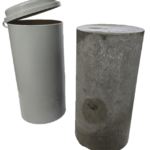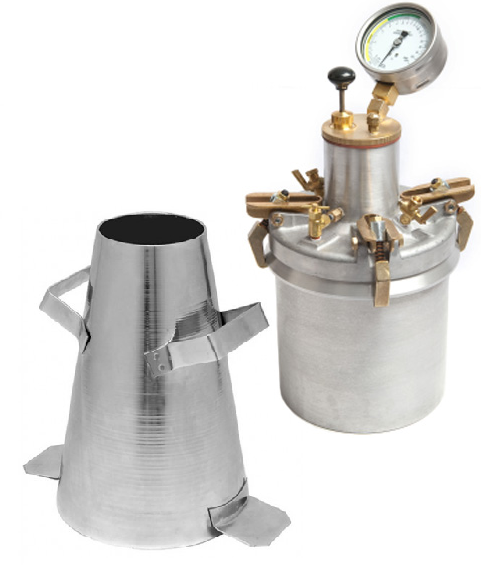
Concrete Testing in the Greater Toronto Area
Dependable field and laboratory concrete testing services!



Compression Testing
Concrete compression testing under CSA A23.2 follows a standardized procedure to determine the compressive strength of concrete cylinders. The process begins with casting concrete into cylindrical molds (100 mm x 200 mm) and curing them under controlled conditions.
Before testing, technicians cap the specimens to create smooth, parallel loading surfaces. A calibrated compression testing machine then applies a continuous load at a rate specified in the standard until failure occurs. The system records the maximum load, and the compressive strength is calculated by dividing the failure load by the cross-sectional area of the specimen.
These results play a key role in quality control, structural design validation, and compliance with project specifications.
Wet Concrete Properties
Testing the wet properties of concrete under CSA A23.2 involves measuring slump, temperature, and air entrainment. These tests help evaluate workability, consistency, and durability before placement.
The slump test (CSA A23.2-5C) uses a standardized slump cone. Fresh concrete is placed in three equal layers, with each layer tamped 25 times using a rod. After lifting the cone, technicians measure the vertical difference between the original height and the displaced concrete to assess workability.
For the temperature test (CSA A23.2-17C), a calibrated thermometer is inserted into freshly mixed concrete. This ensures the mix meets project specifications and stays within an optimal temperature range for hydration.
The air entrainment test (CSA A23.2-4C) uses a pressure-type air meter to determine the percentage of entrained air. This step ensures adequate freeze-thaw resistance and enhances durability.
By performing these tests, professionals confirm that fresh concrete meets design requirements and construction standards.
Chloride Ion Content
Testing for chloride ion content under CSA A23.2-21C helps assess the risk of reinforcement corrosion in hardened concrete. The process begins with collecting representative concrete samples through core drilling or powder sampling at specified depths.
After collection, technicians finely grind the samples and subject them to either acid digestion or water-soluble extraction, depending on whether total or water-soluble chloride content needs measurement. The extracted solution is then analyzed using titration methods (such as potentiometric silver nitrate titration) or an ion-selective electrode to quantify chloride concentration.
The final results are compared to permissible chloride limits in structural concrete. This ensures compliance with durability standards, reduces corrosion risks, and helps evaluate existing structures or verify new concrete formulations.
By following these procedures, professionals can maintain structural integrity, long-term performance, and regulatory compliance.
Construction Material Testing

Mortar and Grout
Compressive strength testing of cementitious cubes
Roofing
Inspection of roofing material application
Asphalt
Compaction testing and laboratory determined Marshall stability and flow parameters
Waterproofing
Inspection of application
Fireproofing
Inspection of sprayed-on and intumescent fireproofing and fire stops
Structural Steel
Inspection of structural steel and deck installation
Aggregate
Compaction testing of granular fills, laboratory sieve analyses and Proctor Compaction Tests
Rebar
Inspection of reinforcing steel installation
Concrete Moisture
Moisture testing of slabs for flooring applications
Pull Testing
Pull testing of masonry anchors and membranes
Guardrails
Load testing of railings
Concrete Testing
by J.T. Donald Consultants Limited
340 Don Park Road, Unit 10
Markham, ON L3R 1C5
416-751-5230
mail@jtdonald.com
